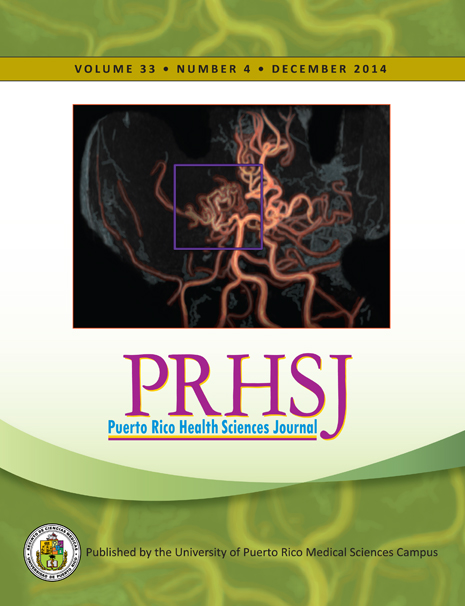Abstract
Objective: Hepatocellular carcinoma (HCC), the most common type of liver cancer, is becoming a healthcare burden for Puerto Rico and, in particular, for those clinics that specialize in liver disease. It is our hypothesis that liver transplantation, the most effective curative option for unresectable tumors, is underutilized. We describe in detail the outcomes of liver transplants for HCC in Puerto Ricans referred to a major liver transplant center in the USA. Methods: Thirty-two Puerto Rican HCC patients receiving transplants (from January 1, 1997, through July of 2012) at Tampa General Hospital are described. Recurrence rates were calculated, and the Kaplan–Meier estimator was used for survival analysis. Results: The proportion of transplants performed for HCC in our Puerto Rican patients was only 12% (p = 0.05). Disease-free survival at 1, 3, and 5 years was 93.7%, 83%, and 78.8%, respectively. Patient survival at 1, 3, and 5 years was 96.7%, 75%, and 67%, respectively. Sixty-nine percent of the 32 patients were alive at the mean follow-up of 56 months. The recurrence rate from 2002 to the present is 14%. Conclusion: This study provides the most comprehensive report detailing the relative benefits of utilizing liver transplantation as a curative option for Puerto Ricans with hepatocellular carcinoma. It also incorporates the first comprehensive review of the available literature of liver cancer in Puerto Rico. Survival and recurrence rates were comparable to published results. In Puerto Rico, liver transplantation for HCC patients has been underutilized. In order to improve outcomes over the next 2 decades, it is imperative that the healthcare system in Puerto Rico handle the burden of this disease using liver transplantation, locoregional therapies, and newer treatments for hepatitis C and HCC.
Authors who publish with this journal agree to the following terms:
a. Authors retain copyright and grant the journal right of first publication with the work simultaneously licensed under a Creative Commons Attribution License that allows others to share the work with an acknowledgement of the work's authorship and initial publication in this journal.
b. Authors are able to enter into separate, additional contractual arrangements for the non-exclusive distribution of the journal's published version of the work (e.g., post it to an institutional repository or publish it in a book), with an acknowledgement of its initial publication in this journal.
c. Authors are permitted and encouraged to post their work online (e.g., in institutional repositories or on their website) prior to and during the submission process, as it can lead to productive exchanges, as well as earlier and greater citation of published work (See The Effect of Open Access).
